The Rotex separation vibration sieve machine stands as a pinnacle of separation technology, offering unparalleled precision in the sorting and grading of particulate materials. Its application spans a multitude of industries, each benefiting from its ability to deliver high-quality, size-specific separation.
Types and Characteristics of Rotex Separation Vibration Sieve Machines
Within the Rotex separation vibration sieve machine family, there are several types, each with unique characteristics designed to meet diverse industry requirements. The FXS-1230 square gyratory vibrating sieve, for example, boasts a high-efficiency output, making it an industry favorite for sugar processing. Its square design maximizes usable screen area, resulting in higher throughput. The Rotex round small vibration screen is tailored for precious metal processing, such as gold, where its compact design and precise sieving capabilities are invaluable. For applications requiring gentle handling, such as sand separating, the Square Tumbler Vibrating Screen offers a gyratory swing sieving motion that closely mimics manual sieving. Each type is a testament to the adaptability of the Rotex design, capable of serving industries as varied as pharmaceuticals, metallurgy, and agriculture with equal efficacy.
Structure and Operational Components
The intricate structure of the Rotex separation vibration sieve machine is a marvel of engineering. At its core lies the motor, which is the driving force behind the gyratory motion. This motion is meticulously transferred to the screens, which are strategically layered to facilitate the separation process. The material enters through the top screen, and as the machine vibrates, particles are sorted by size, with finer particles descending through the screens and larger particles progressing towards the outlet. The machine's framework, often made from robust materials like steel or stainless steel, supports the screens while absorbing the vibrations, ensuring stability and longevity.
Materials and Properties
The choice of materials for constructing a Rotex separation vibration sieve machine is critical for its performance and longevity. Carbon steel offers strength and is favored for its cost-effectiveness in general applications. Stainless steel 304, known for its corrosion resistance, is the material of choice for industries that demand high standards of hygiene and cleanability, such as food and pharmaceuticals. These materials are not only selected for their physical properties but also for their ability to meet industry-specific regulations and standards.
Business Usages and Applications
The Rotex separation vibration sieve machine is a linchpin in the operational workflow of various industries. In food processing, it ensures the consistency and purity of ingredients, directly impacting product quality and safety. In the realm of construction, it efficiently grades materials like sand and gravel, contributing to the structural integrity of concrete and other building materials. For the agricultural sector, it precisely sorts seeds and grains, which can significantly enhance the value of the agricultural products. The machine's ability to deliver high-quality separation quickly translates into cost savings, higher throughput, and ultimately, a stronger bottom line for businesses.
Functions and Tasks
The Rotex separation vibration sieve machine is designed to perform a variety of separation tasks with high precision. Its gyratory motion, coupled with vibration, allows for the effective sorting of particles by size. This dual-action ensures that materials are not only separated but also spread evenly across the screens, maximizing contact with the screen surface for better separation efficiency. The machine's capability to handle both dry and wet materials makes it a versatile tool in the arsenal of industry professionals.
Features and Unique Selling Points
Key features of the Rotex separation vibration sieve machine include its multi-layer screening system, which allows for multiple separations in a single operation. The adjustable screen angles and vibration parameters can be fine-tuned to suit specific materials, ensuring optimal performance. These features, along with the machine's reliability and ease of maintenance, are its unique selling points that distinguish it from other sieving machines in the market.
Benefits and Positive Outcomes
The adoption of a Rotex separation vibration sieve machine within a production line brings forth a multitude of benefits. It ensures the consistency of product size, which is crucial for subsequent processing stages or for maintaining product standards. The machine's efficiency in separating materials also leads to less waste, more effective use of raw materials, and a reduction in the environmental impact of industrial processes. Users benefit from a machine that is not only effective but also easy to integrate into existing production lines, thanks to its compact design and flexible operation.
How to Use and Operate
Effective operation of a Rotex separation vibration sieve machine begins with proper setup and calibration. Operators must ensure that the machine is level and that the screens are securely fastened. Material is fed into the machine at a controlled rate to prevent overloading. Adjustments to the vibration settings and screen angles can be made to optimize the separation process for different materials. Regular monitoring during operation is essential to detect any irregularities and to ensure the machine is functioning as intended.
How to Choose the Right Model
When selecting the appropriate Rotex separation vibration sieve machine, it is crucial to consider the specific needs of the material processing, the desired capacity, and the particular demands of the industry in question. The machine's layer configuration, screen mesh size, and even the construction material can significantly influence the outcome of the separation process. Prospective buyers should also take into account the availability of local service locations and the comprehensiveness of after-sales support when making their selection.
How to Clean and Maintain
The maintenance of a Rotex separation vibration sieve machine is straightforward yet vital for its sustained operation. Cleaning involves the removal of any residual material from the screens and collection areas to prevent clogging and maintain hygiene standards. Regular maintenance tasks include checking and lubricating moving parts, inspecting for wear and tear, and replacing any components that are not functioning optimally. A well-maintained machine is more reliable, safer to operate, and has a longer service life.
How to Install
Installation of a Rotex separation vibration sieve machine is a critical process that should be carried out by skilled technicians. The installation includes assembling the machine, ensuring all components are correctly aligned, and conducting a thorough test run to verify that all systems are operational. Proper installation is key to the machine's performance and safety.
Target Audience and Industry Adaptation
The Rotex separation vibration sieve machine is designed with a diverse range of industries in mind. Its target audience includes sectors that require precise material separation, such as mining, recycling, food production, and pharmaceuticals. The machine's adaptability allows it to meet the stringent requirements of these industries, providing a solution that is both efficient and reliable.
How to Choose the Right Rotex Separation Vibration Sieve Machine?
Choosing the right Rotex separation vibration sieve machine involves considering factors such as the material to be processed, desired throughput, and the specific application requirements. It is important to select a machine with the appropriate layer configuration and screen size to achieve the best separation results. Additionally, considering the local service locations, such as the Philippines, Malaysia, or Australia, can be crucial for ensuring timely after-sales support.
How to Maintain Your Rotex Separation Vibration Sieve Machine?
Maintaining a Rotex separation vibration sieve machine involves regular inspections of core components like motors and bearings, timely replacement of worn-out parts, and adherence to cleaning protocols, especially in food processing applications. Proper maintenance ensures the longevity of the machine and consistent performance in industrial settings.
What After-sales Services Are Available for the Rotex Separation Vibration Sieve Machine?
After-sales services for the Rotex separation vibration sieve machine typically include online support, video technical support, and the availability of engineers to service machinery overseas. Some suppliers on Alibaba.com also offer field maintenance and repair services, ensuring that any issues with the machine can be promptly addressed to minimize downtime.






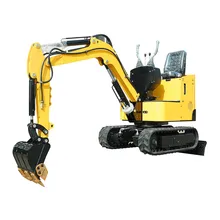

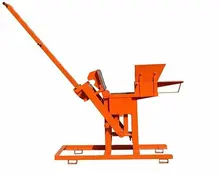

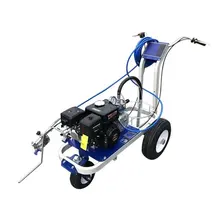
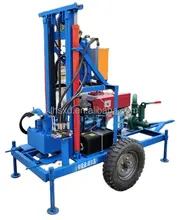


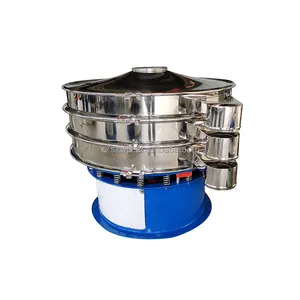















 浙公网安备 33010002000092号
浙公网安备 33010002000092号 浙B2-20120091-4
浙B2-20120091-4